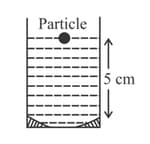Where should an object long be placed in front of a convex mirror of focal length to obtain an image long.
Important Questions on Ray Optics and Optical Instruments
A mirror is placed at an angled of with respect to axis (see figure). A light ray travelling in the negative direction strikes the mirror. The direction of the reflected ray is given by the vector
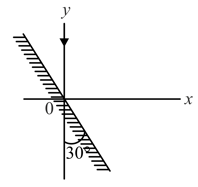
A hemispherical glass body of radius 10 cm and refractive index 1.5 is silvered on its curved surface. A small air bubble is 6 cm below the flat surface inside it along the axis. The position of the image of the air bubble made by the mirror is seen :
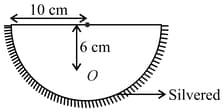
| Column 1 | Column 2 | ||
| (A) | (a) | Convex mirror | |
| (B) | (b) | Concave mirror | |
| (C) | (c) | Real image | |
| (D) | (d) | Virtual image |
A point object is moving uniformly towards the pole of a concave mirror of focal length along its axis as shown below. The speed of the object is . At , the distance of the object from the mirror is . The average velocity of the image formed by the mirror between time and is:

A point source of light, is placed at a distance in front of the center of plane mirror of width which is hanging vertically on a wall. A man walks in front of the mirror along a line parallel to the mirror, at a distance as shown below. The distance over which the man can see the image of the light source in the mirror is:
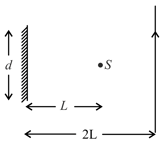
| Object pin | Convex Lens | Convex Mirror | Image Pin |
| 22.2 cm | 32.2 cm | 45.8 cm | 71.2 cm |
A particle is oscillating on the -axis with an amplitude about the point with a frequency. A concave mirror of focal length is placed at the origin (see figure).
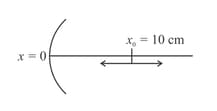
Identify the correct statements?
(i) The image executes periodic motion.
(ii) The image executes non-periodic motion.
(iii) The turning points of the image are asymmetric with respect to the image of the point at .
(iv) The distance between the turning points of the oscillation of the image is .
